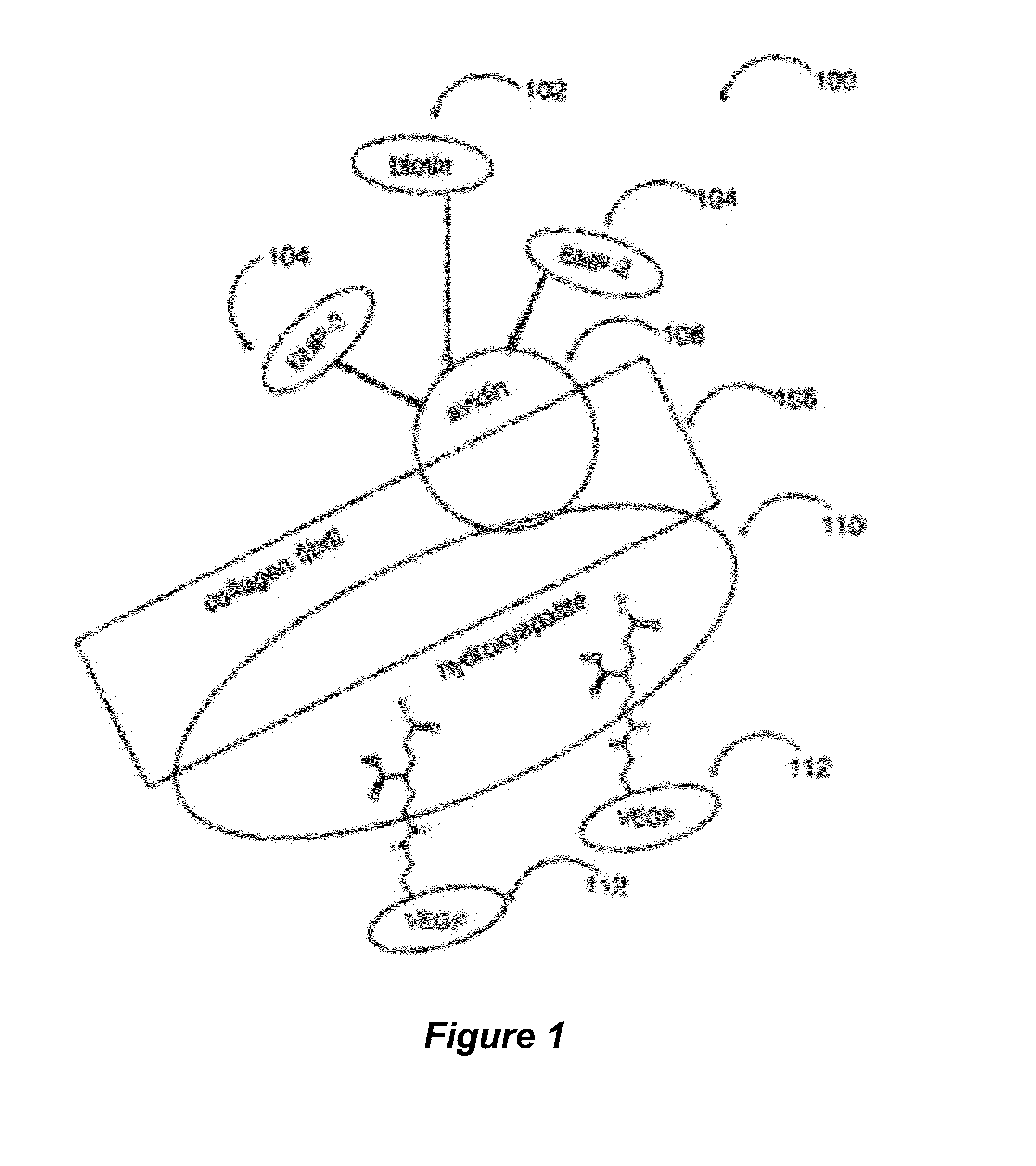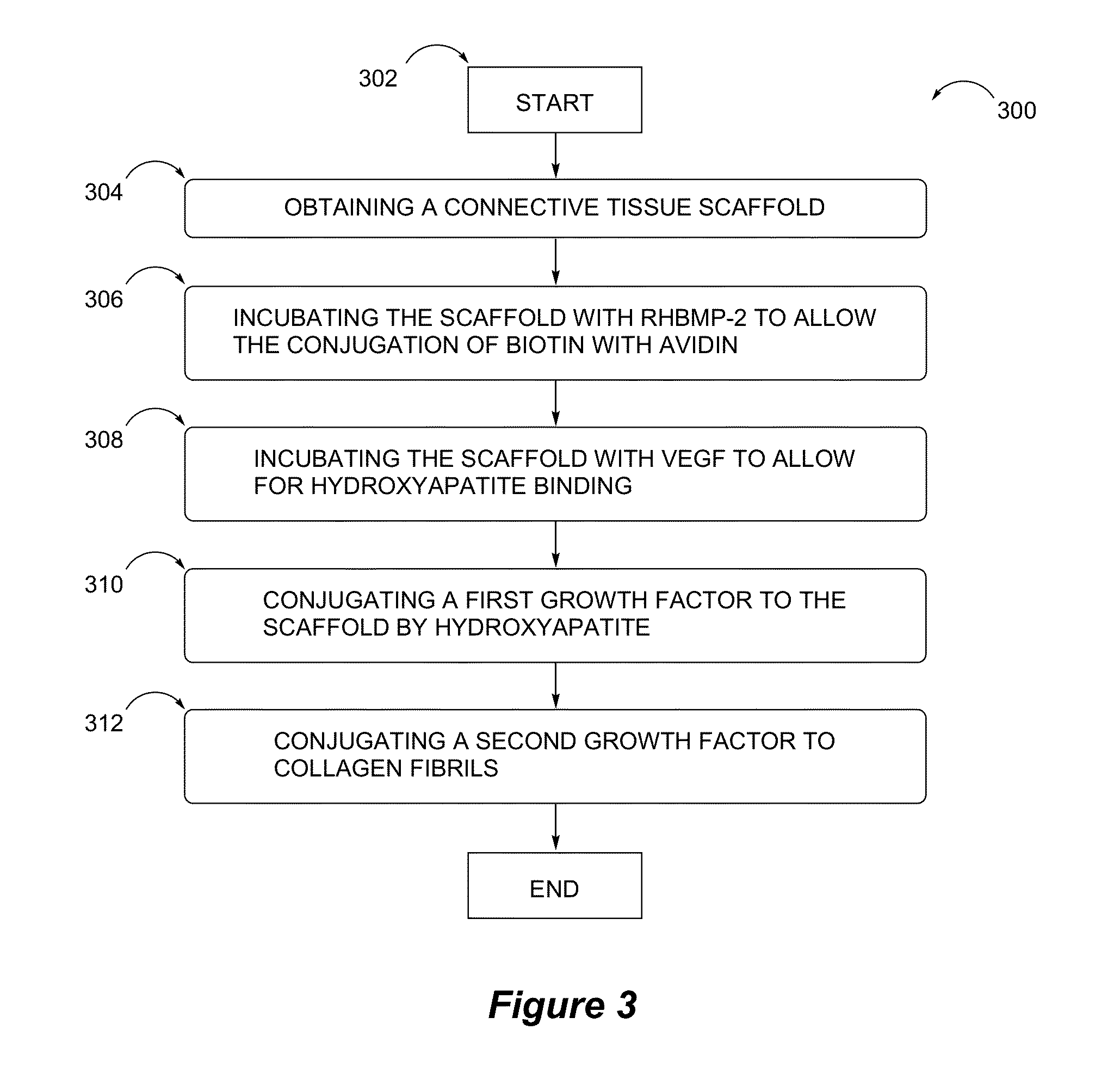Tissue scaffolds having bone growth factors
a tissue scaffold and growth factor technology, applied in the direction of prosthesis, peptide/protein ingredient, drug composition, etc., can solve the problems of insufficient inability to achieve sequential and sustained release of growth factors along biologically relevant timelines, and inability to treat bone defects and fractures via the delivery of vegf and bmp-2. achieve the effect of increasing mechanical strength and osteogenic properties
- Summary
- Abstract
- Description
- Claims
- Application Information
AI Technical Summary
Benefits of technology
Problems solved by technology
Method used
Image
Examples
embodiments
[0065]In one embodiment a tunable tissue scaffold is provided, which is useful as an implantable synthetic bone graft substitute to promote the repair and / or regeneration of tissue and / or bone in a tissue of a patient having a bone defect or fracture. The scaffold comprises a matrix and at least two bioactive agents delivered to the matrix via different mechanisms.
[0066]The at least two bioactive agents may comprise A and B wherein, bioactive agent A has been delivered to the matrix by conjugation and a protein-ligand interaction between biotin and a biotin-binding protein, and bioactive agent B has been delivered to the matrix by (i) conjugation and a pH labile covalent linkage or (ii) non-conjugation and passive adsorption.
[0067]The biotin-binding protein may be selected from the group consisting of streptavidin, avidin, neutravidin, and non-glycosylated, tetrameric biotin-binding proteins.
[0068]The at least two bioactive agents may be selected from the group consisting of vascula...
PUM
| Property | Measurement | Unit |
|---|---|---|
| vol % | aaaaa | aaaaa |
| vol % | aaaaa | aaaaa |
| compressive modulus | aaaaa | aaaaa |
Abstract
Description
Claims
Application Information
 Login to View More
Login to View More - R&D
- Intellectual Property
- Life Sciences
- Materials
- Tech Scout
- Unparalleled Data Quality
- Higher Quality Content
- 60% Fewer Hallucinations
Browse by: Latest US Patents, China's latest patents, Technical Efficacy Thesaurus, Application Domain, Technology Topic, Popular Technical Reports.
© 2025 PatSnap. All rights reserved.Legal|Privacy policy|Modern Slavery Act Transparency Statement|Sitemap|About US| Contact US: help@patsnap.com



